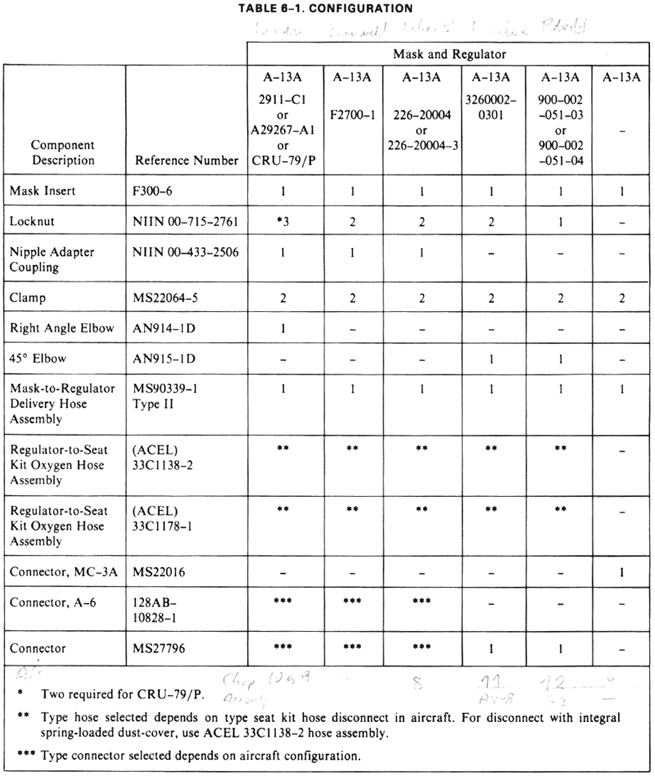Latest update 28 May 2012
GENERAL.
The A-13A oxygen mask is a pressure demand type mask, and is normally used with pressure demand oxygen systems. The A-13A oxygen mask is authorized for use with diluter demand oxygen systems. The A-13A mask may be used routinely in flights up to 43,000 feet altitude. In emergency situations the A-13A mask may be used up to 50,000 feet altitude, but due to human limitations, only for short periods of time.
The A-13A oxygen mask consists of a face piece, two inhalation valves, a pressure compensating exhalation valve, microphone cavity, harness and adapter assembly and breathing hose assembly. The mask is supplied in three sizes; large, medium and small. The facepiece has two cheek flaps for protection to the face from flash fire, wind blast, etc. The newer (silicone) masks are constructed of elastomer material and are dark olive in color. The silicone masks have a longer shelf life, contain ozone resistant properties, are free of odor and cause less facial irritation. The silicone mask does not require a laminar seal unless irregular facial features cause poor fit and sealing. The older A-13A masks are constructed of Buna-N rubber, and require a laminar seal to improve fit and insure proper sealing. These masks are mildew-resistant, and remain flexible at low temperatures. The adapter and harness assembly is constructed of fiberglass with nylon straps for adjustment, and retainer releases for attaching the mask to the aircrewman's helmet. The adapter and harness assembly is supplied in three sizes; large, medium and small. Size of mask and adapter must correspond. The oxygen delivery hose is supplied as a subassembly.
CONFIGURATION.
There are five basic A-13A mask personal configurations (see figures 6-1 through 6-4 and refer to table 6-1). Each configuration incorporates an A-13A mask and an MS90339-1 or -2 delivery-hose assembly. At this point the configurations differ in the type of component connected to the free end of the delivery hose. The required type of component (miniature regulator, MC-3A connector, special A-6 aircraft connector or MS27796 connector) must be requisitioned separately.
A-13A Oxygen Mask Assembly Incorporating a Chest Mounted Oxygen Regulator. This configuration is applicable to all aircraft systems employing the A-13A oxygen mask and miniature oxygen regulator (applicable to the F-8, TA-4E, A-7A, T-2A, T-2B, A-3, A-4, F-4 and RA-5C aircraft as of 15 June 1973). The regulator outlet is attached to the free end of the delivery hose, and the regulator inlet is attached to the regulator-to-seat kit hose (see figure 6-1 and refer to table 6-1). The regulator and regulator connection are enclosed in a cloth retention pocket attached to the SV2 Survival Vest at the wearer's chest. The oxygen hose is held in place by a tab located below the retention pocket on the vest main panel. Refer to table 6-1 for appropriate regulator for each configuration.
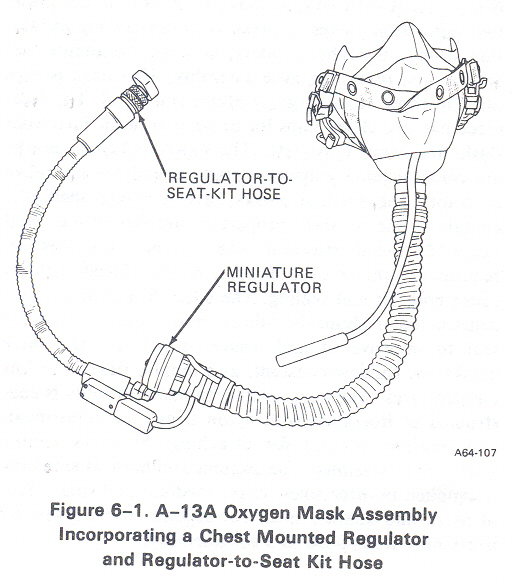
A-13A Oxygen Mask Assembly Incorporating an MC-3A Connector. This configuration consists of an A-13A mask, an oxygen delivery hose and an MC-3A connector (see figure 6-2, and refer to table 6-1).
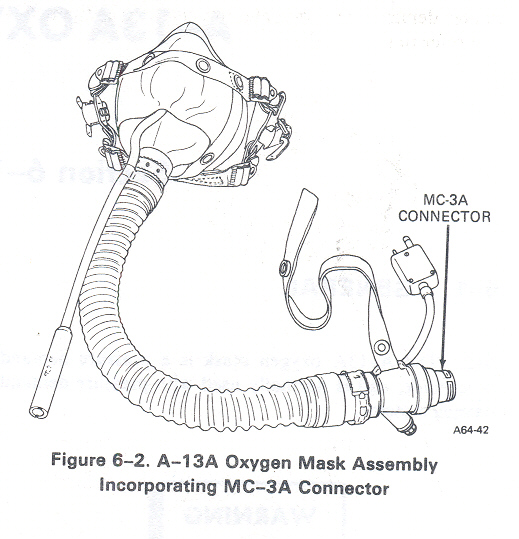
A-13A Oxygen Mask Assembly Incorporating an A-6 Aircraft Special Connector. This configuration consists of an A-13A mask, an oxygen delivery hose and an A-6 aircraft special connector (see figure 6-3 and refer to table 6-1). It is used with the Model 29252 seat mounted oxygen regulator.
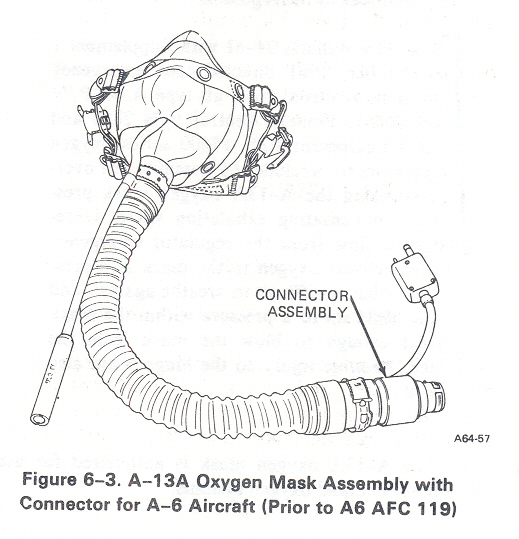
A-13A Oxygen Mask Assembly With MS27796 Connector. This configuration consists of an A-13A mask, an oxygen delivery hose and an MS27796 connector. It is used with PIN 900-002-051-03,900-002-051-04 and 3260002-0301 diluter demand chest mounted regulators (see figure 6-4 and refer to table 6-1).
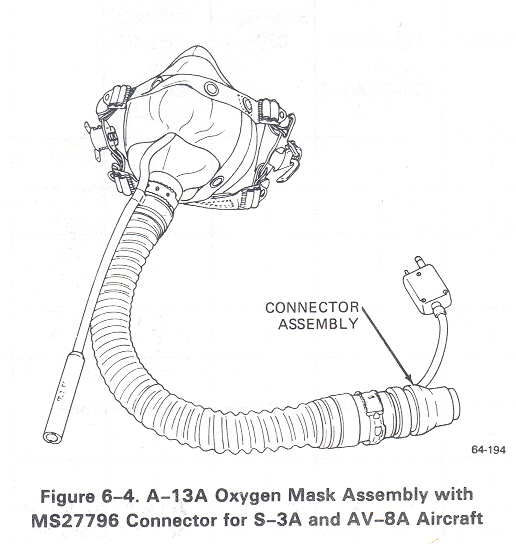
A-13A Oxygen Mask Assembly With MS90339-2 Hose Assembly. This configuration consists of an A-13A mask, MS90339-2 oxygen delivery hose and an MC-3A connector. It is used in aircraft not requiring use of oxygen mask during normal flight operations (e.g., E-2 series aircraft).
